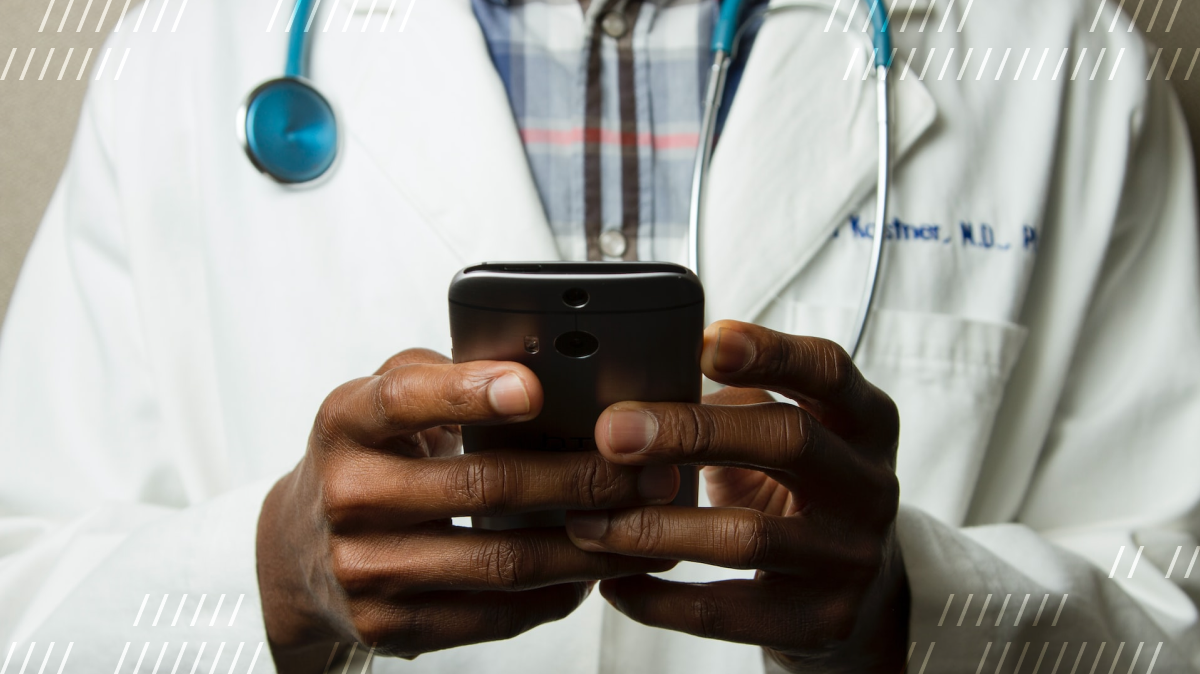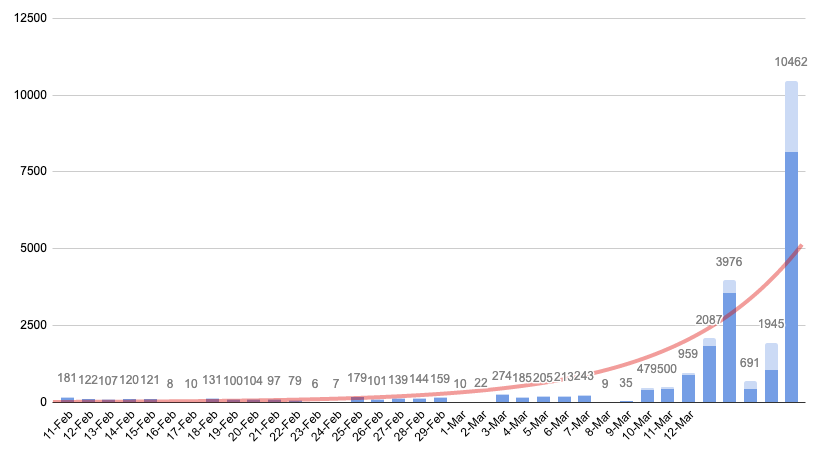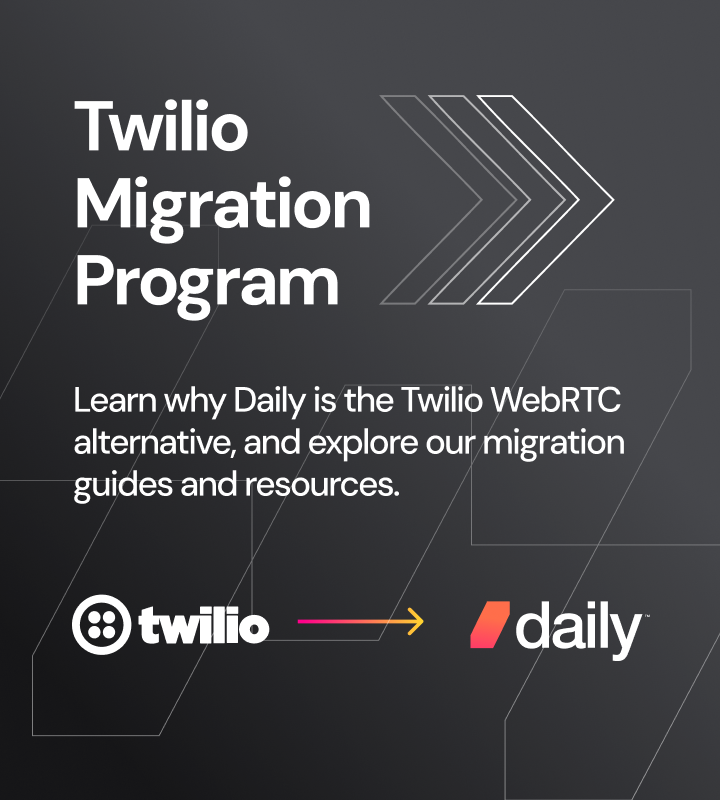
Digital health care services are poised to introduce great changes in health care in the coming years, including self-service solutions for patients that augment or replace many of today’s physician visits. Natural language processing and machine learning will change the consultations themselves. These technologies will introduce tools that will help providers and patients in better ways–from understanding their language with automated interpretation to creating summaries of consultations. Ultimately, artificial intelligence will provide doctors with driver assist; it will map described symptoms and issues to vast medical knowledge databases during the consultation itself.
💫 Update: we have also recorded a webinar where we go more in depth on the topic of future digital health care. Sign up to view the webinar on demand.
The last few years have seen health-care providers adopt digital health solutions on a massive scale. As the pandemic proved, much of what had been done previously in office consultations can also be done remotely. Patients have come to expect health care that is available remotely. Just as more functions of society can happen remotely, health care will have to be available remotely as well.
Since 2017, I have been running Confrere, a video-calling solution focusing on health care, now acquired by Daily. Joining Daily feels like a good opportunity to stop and reflect on the current state of digital health care and how it might look in another 10 years. The first half of 2020 saw a massive adoption of remote consultations, in particular video consultations. The pandemic made this happen in all markets at the same time.

In February–March 2020 we saw a 10× growth in revenue and 100× growth in the number of video consultations, in just two months! While the number has leveled off since then, it is clear it won’t go back to pre-pandemic numbers.
More importantly, I can see an underlying change that is the primary driver of this development and that will also drive change in the coming years: The attitude of practitioners towards information technology has changed. Pre-pandemic, we would hear statements like:
“Video consultations? We’re never going to do that!” (Heard on a call with a GP office in the fall of 2019. That same office started doing video calls in March 2020.)
Suddenly we instead began to hear things like:
“Video consultations have opened a new way to meet patients. It can even be better than ordinary consultations!” (As described in this op-ed.)
This attitude shift opens the door to many changes in health care in the coming years. Participation of health-care practitioners in developing digital health care will integrate their years of experience directly into digital health services.
Practitioners have mostly preferred to do things the traditional way, and have seen digital technologies as fixed and unchangeable. That preference has added to their workload—and even caused burnout. While the pandemic changed a lot, we have only seen the beginning: the most significant developments in digital health are still ahead.
So where is digital health going? Proclamations about the future always run the risk of being wildly speculative, but if we extend the trajectory of what is already in motion, some predictions can be made:
Digital therapeutics
First: there will be a proliferation of digital self-service solutions for health care. These solutions will take away some of the mundane work being done by doctors today, allowing them to focus on the issues that cannot be tackled with self-service. These solutions will also increase the availability of health care to the general public—health care produced as more affordable digital self-service solutions. This will scale better than current in-person consultations and produce a better general availability of health care.
Many doctor consultations today include simple, almost clerical tasks that can be automated. Urinary tract infection again? Try this antibiotic. For many of these simple consultations, both doctor and patient know exactly what is going to happen. In this situation, it would be a better idea to have a digital solution ask the patient specific questions, and the doctor review the patient’s answers.
Self-service solutions point the way towards a class of solutions known as digital therapeutics, which will measure and assess the development of specific conditions as well as provide self-administered interventions. Such solutions are well suited for mild mental-health conditions as well as most chronic diseases. They will help patients and providers follow up on treatment responses more closely than today.
Doctor consultation 2.0
Second: Despite the development of self-service solutions, the doctor consultation will remain the point of contact between health-care providers and patients for the foreseeable future. Patients who are sick and unsure about their current condition want to actually see a doctor. Some current developments in self-service solutions are counterproductive, especially those that try to prevent doctor consultations (such as digital triage as a gating function, automated diagnosis, etc.). Self-service solutions should instead focus on integrating the doctor consultation into a good workflow: appointment booking and reminders, pre-appointment check-in and post-appointment follow-up. Those functions will contribute to smoother functioning of health care and the patient’s feeling of being cared for.
So will doctor consultations remain exactly as they are today? Absolutely not. I sincerely believe that the most significant technological development in the next few years will take place in the doctor consultation itself. We will see the entrance of AI and Machine Learning into the medical space, and—similar to developments in automotive tech—the focus will not be on full automation, but rather on creating assistive technologies that can provide health-care professionals with tooling for use during health-care consultations.
We already have the technology to provide good transcripts of a video call using natural-language processing. In the next few years, transcription will develop further to also provide translated live captions. Language barriers provide a significant hurdle to equitable access to health care, so this is a technology that is likely to see rapid adoption.
Providing good translation requires some depth of knowledge in the language-processing model, a depth that can also be utilized for other purposes. If sufficient understanding of the medical field can be built into language processing, it will be possible to also utilize machine learning to produce medical summaries of a consultation.
Producing consultation summaries (also called SOAP notes) is required for all consultations and takes up a significant portion of the provider’s time. Automating summary production will significantly improve the productivity of health-care providers. While some companies are working on this problem already (e.g., DeepScribe, Upheal), I think we will have to wait 3–5 years before the tech is mature enough for production deployments.
Introduction of AI
In my opinion, the above will take place as a gradual development, where each step builds on the previous. This will naturally happen in the context of video consultations, as digital audio and video will already be in place there. There will most likely be resistance towards introducing microphones and cameras for in-office consultations, which will not benefit from these technologies until the point where the pros clearly outweigh the cons. That will likely be when automated medical summaries are good enough to be widely in use. At that point, a huge productivity gain will be realized by introducing microphones and cameras also for in-office consultations.
With sufficient “medical understanding” of natural language conversation, an AI may be useful in a different way: It can use the semantic understanding of the medical conversation to access vast digital databases of medical knowledge. It will then be possible to build driver assist for medical professionals that parses the consultation conversation in real time and presents the doctor with potential diagnoses and follow-up actions. Since computers can access vast amounts of information much faster than humans, this driver assist is likely to greatly increase the accuracy of diagnosis and the necessity of indicated medical procedures. I believe we will see the first of these systems appearing around 5 years from now, and they will see widespread adoption 5 years after that.
The coming years present exciting opportunities for technology development in health care. While the developments can be predicted with some accuracy, it is far less certain who the actors will be to implement these technologies. Health-record software companies have a good position, but are notoriously slow to implement new functionality. That creates an opening for telehealth software companies to take the lead on serving the health care industry with these technologies. Add the telehealth providers into the mix, and the stage is set for an epic race in the coming years. We at Daily aim to support all of these developments, thereby positioning ourselves as the leading provider of compliant video for health-care applications.


